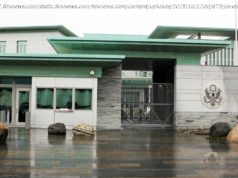A Wednesday opinion serves as a de facto rebuttal to many of the theories explored in « Making a Murderer » Part 2.
The Wisconsin Court of Appeals on Wednesday morning denied a deluge of motions for post-conviction relief by Steven Avery, the central figure in the Netflix docuseries Making a Murderer. The unsigned per curiam opinion contains no concurrences and no dissents — indicating that the panel was unanimous. Sixteen judges hear cases on the state court of appeals; each case is generally heard by three judges. In Avery’s case, Chief Judge Lisa S. Neubauer, Presiding Judge Paul F. Reilly, and Judge Jeffrey O. Davis made up the panel, and all three judges spoke for the court. Their opinion legally foreclosed many of Avery’s attacks on his 2007 conviction in the murder of freelance photographer Teresa Halbach and served as a de facto rebuttal to many of the theories explored in Making a Murderer Part 2 — even though the multi-season, multi-episode production was named in the opinion only once. Avery defense attorney Kathleen Zellner said it provided a narrow window for future attacks on Avery’s long-debated conviction. “Not deterred by the appellate court decision,” Zellner said in a Wednesday morning tweet. “[I]t pointed out the specific doors that are still open for Mr. Avery’s quest for freedom. We appreciate the careful review.” On Tuesday, before the Court of Appeals largely rubbished her case on both the facts and the legal tactics she employed, Zellner said she was “hoping justice prevails” but that her “quest never ends until Steven is free.” The Court of Appeals opinion examined a sum total of six defense motions which have been moving through Wisconsin state courts since 2016. That smattering of arguments were the subject of voluminous briefs, motions, affidavits, and exhibits in an attempt to flip Avery’s storied and convoluted conviction, and the Court of Appeals examined each in turn. The court recapped the legal moves in brief while ultimately deciding that Avery was not entitled to the relief he sought — at least not right now: The 49-page opinion leans heavily on state procedural statutes. As the opinion notes, Wisconsin law — generally speaking — “promotes finality once the defendant has been convicted and sentenced.” Here is a summary of the Court of Appeals holdings on each of Zellner’s six motions. Motion 1 — June 2017 This appellate motion arose from a 2016 motion before Avery’s trial court to secure independent testing on nine separate trial exhibits: “seven samples of bloodstain cuttings, swabs, or blood flakes taken from Halbach’s RAV4; Halbach’s RAV4 key; and a 1996 sample of Avery’s blood.” Avery eventually asked for a new trial “on the results of this testing and other investigations,” the Court of Appeals noted. Among Avery’s claims were that his trial attorneys — Jerry Buting and Dean Strang — provided ineffective assistance of counsel. Avery also claimed (through his new attorney) that his prior pro se attempt to litigate his own appeal was also ineffective. The Court of Appeals rubbished many of the ineffective assistance of counsel claims as to Buting, Strang, and Avery himself by noting that successive motions on appeal cannot “turn[] into something akin to Russian nesting dolls, wherein a litigant can simply allege a continuous series of ineffective assistance of counsel claims to justify previous failures to raise an issue.” Avery’s learning disabilities, his status as a prisoner of modest monetary means, and his lack of knowledge of the law and the facts — all issues Zellner has long argued should allow the court to override Avery’s earlier claims — were legally pointless, the Court said, given that Wisconsin law provides defendants with one chance to raise an appeal under Wisconsin Statute § 974.06, the unsympathetic court explained a length: The “exception,” the Court of Appeals said, allowed further inquiry into some, but not all, of Zellner’s theories of the case. The court explained in a footnote that some of the evidence Avery has purported to be new or novel is really just a different look at old evidence that’s long since been debated, such as whether or not the key to Halbach’s vehicle fell out of his nightstand the way a law enforcement officer claimed it did at trial. Through a complicated series of multi-paragraph footnotes and concomitant full-page arguments, the Court of Appeals, in essence, said the “result of the proceeding” — that is, Avery’s jury trial — would probably not have been different even if Avery’s trial counsel retained a blood spatter expert, a trace materials expert, a DNA expert, and a forensic fire expert to help argue his case. The Court of Appeals said Zellner’s lawyering was unpersuasive on the law in one lengthy footnote: Nor was Zellner’s evidence persuasive, the court rationed in a series of slams aimed at Zellner’s characterization of her own experts’ conclusions. For instance, Zellner claimed that the sheer volume of Avery’s DNA found on Halbach’s car key suggested that the DNA on the key was planted or doctored by the government. Zellner said that a test whereby Avery held a sample key in recent years didn’t yield anywhere near the amount of DNA the government found on Halbach’s key in the mid-2000s.
Home
United States
USA — Criminal Wisconsin Court of Appeals Demolishes Several Alternate Theories Floated in 'Making a...






